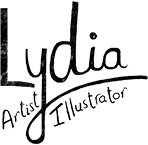Tribes from inaccessible places have always fascinated me. They live in such a different world from the majority of us; they get to live their lives so close to nature. Surrounded by beautiful, colourful plants and extraordinary wildlife yet also dealing with the reality of day to day life at its harshest. The joy of waking up every morning to hearing all sorts of tropical birds singing, looking at the lush greenery but the hardship of having to walk for hours just to see a doctor or collect water brings home the reality of it all.
Omo Valley is in Ethiopia, in Africa and everything they rely on they get from nature. They are a group of various tribes with 45 different languages in all and up until recently they had no idea that there was anybody else living outside of their villages. They do not have a religion as we know it but respect nature as the mother of them all. They place great value on their cattle herds which provide them with meat, milk, leather and status.
They use bamboo in their beehive-like constructions creating solid homes fit for their environment. They make a living from weaving and farming and disputes are settled by tribe elders. The river that runs through the valley causes flooding once a year which is good because this nourishes the ground so they can grow crops. There is no modern technology; TV, radio etc.
The way the Omo Valley Tribes use plants and flowers as cultural fashion and the way they paint onto their bodies by hand I find very curious as well as beautiful. They make body modification and decorations, with local materials and resources in predominantly yellow, white and grey.
The young men whose job it is to look after the grazing cattle have always covered themselves in the local clay to stop the sun burning their skin. The white limestone protects them from insects. Over time they have established that certain colours represent their status among the tribe. It then developed into adding patterns to impress the ladies (and now tourists) and to even keep them safe from illness or the supernatural. These decorations have also developed into piercings and even scarring patterns. The images of these peoples with large discs in their ears and lips are often shocking and it shows they obviously go to great lengths to achieve this reaction. The feathers in the headdresses of tribal elders would represent an impressive hunting victory but this developed into a form of decoration for everyone.
It is interesting to note that because they have no mirrors, they have to paint each other and so this ritual becomes a shared event. This obviously must lead to many close social ties which is important for the tribe.

The Future: As the tribes have let the rest of the world into their lives, it has opened up a gateway for multinational companies to take over their land for industrial farming on a large scale. In 2006 plans were started to construct a hydroelectric dam to provide irrigation of these farms. Hundreds of thousands of these tribespeople living along the Omo River and around Lake Turkana will have their lives changed for ever. They will be forced to live in modern housing organised by their government. There will be no land given over to raising cattle or their own agricultural needs.
These tribes have lost their tradition of creating art to express themselves and to show what their status is. They now apply their artwork in a haphazard way to satisfy the photographers and tourists who are all in a rush and do not want any social interaction with them. The tribes have lost the pride they once had in showing their elaborate artistic creations. They are now just something to see on a sightseeing tour of the region.
Photos taken by Hans Silvester from his book Natural Fashion: Tribal Decoration from Africa and Ethiopia. Hans Silvester: “Body painting, as practiced here in East Africa, the cradle of humanity, seems to me to represent a way of life that dates from prehistory and once enabled humankind to overcome the hostility of nature. Art was then a means of survival.”
The Omo Valley people’s body art inspired me to create a series of linocut print collages with patterns and shapes inspired by their style of body art and their surrounding nature. The fine lines and circles on their faces reflect the style they use.
My goal was not to illustrate the tribal people themselves, but create my version of the Omo tribal culture interpreted through my linocut technique. I have incorporated the facial patterning and included examples of their natural habitat. I have also used vibrant colours to represent the tropical colours found in nature.






If you enjoyed my Omo Valley Tribe Linocut series then you can purchase them from my online Etsy store called Lydia Illustrations



